In this blog post, mount maker Michael Hall writes about preparing a wedding gown with a poignant backstory for display in Back Home: Polish Chicago.
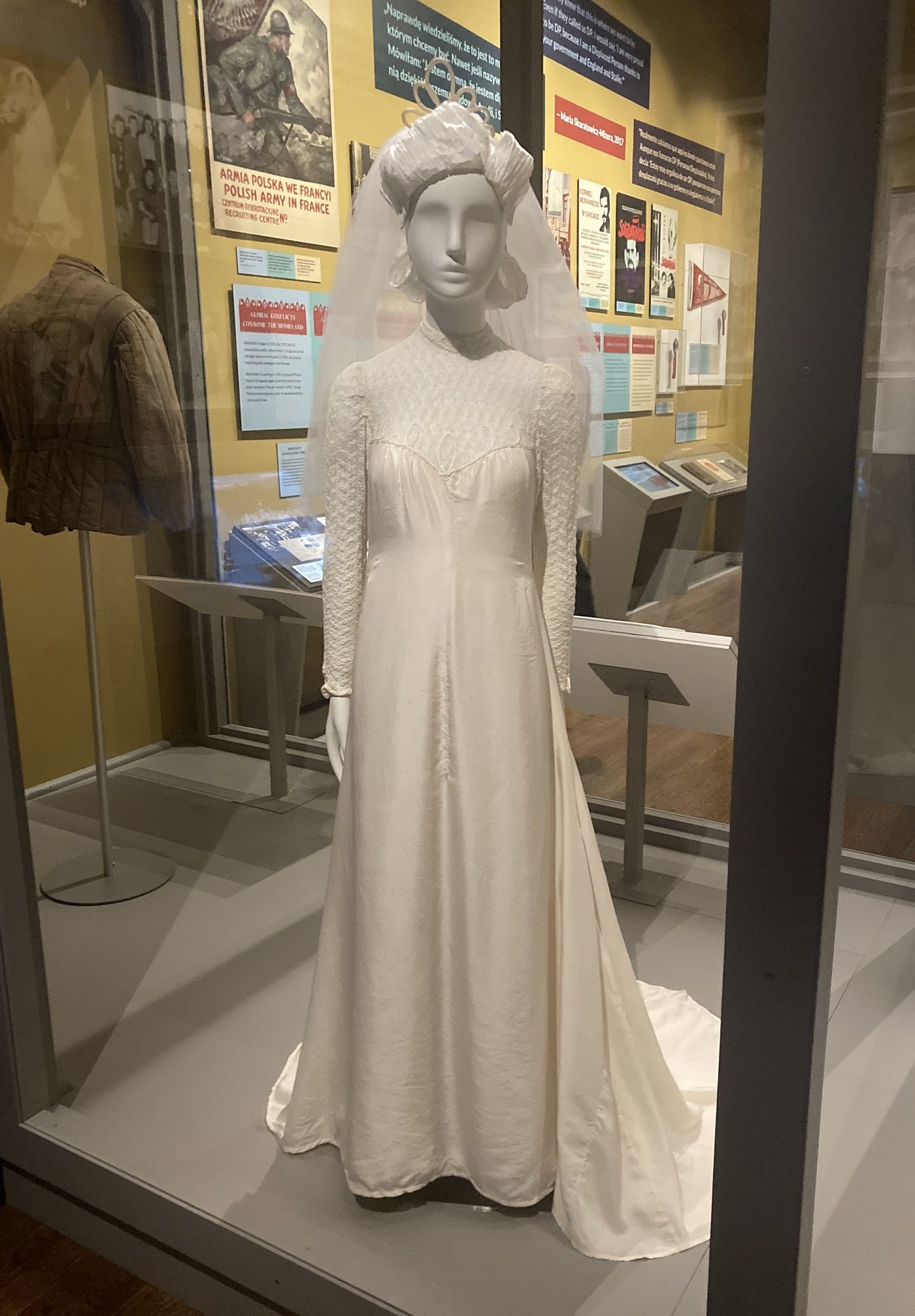
Front view of Jane Wyrwa’s wedding dress and headpiece, Göppingen, Germany, 1947. Courtesy of Eve Wyrwa-Miller. All photographs by CHM staff.
In 1944, Wiesława “Jane” Lippert, originally from Łodz, Poland, and Richard Wyrwa, originally from Lwów, Poland, met at the Nazi forced labor camp and factory in Markranstädt, Germany. There, Richard helped Jane with her assigned job of machining airplane parts, as she had never worked with her hands before. After World War II ended, they lived at the Displaced Persons camp in Göppingen, Germany, where Richard worked as a regional supply officer. They married there in 1947. A local seamstress made Jane’s wedding dress from the silk of a surplus World War II parachute bought from the US military. The dress features a yoked bodice, net lace long sleeves, and a twill weave fabric lining.
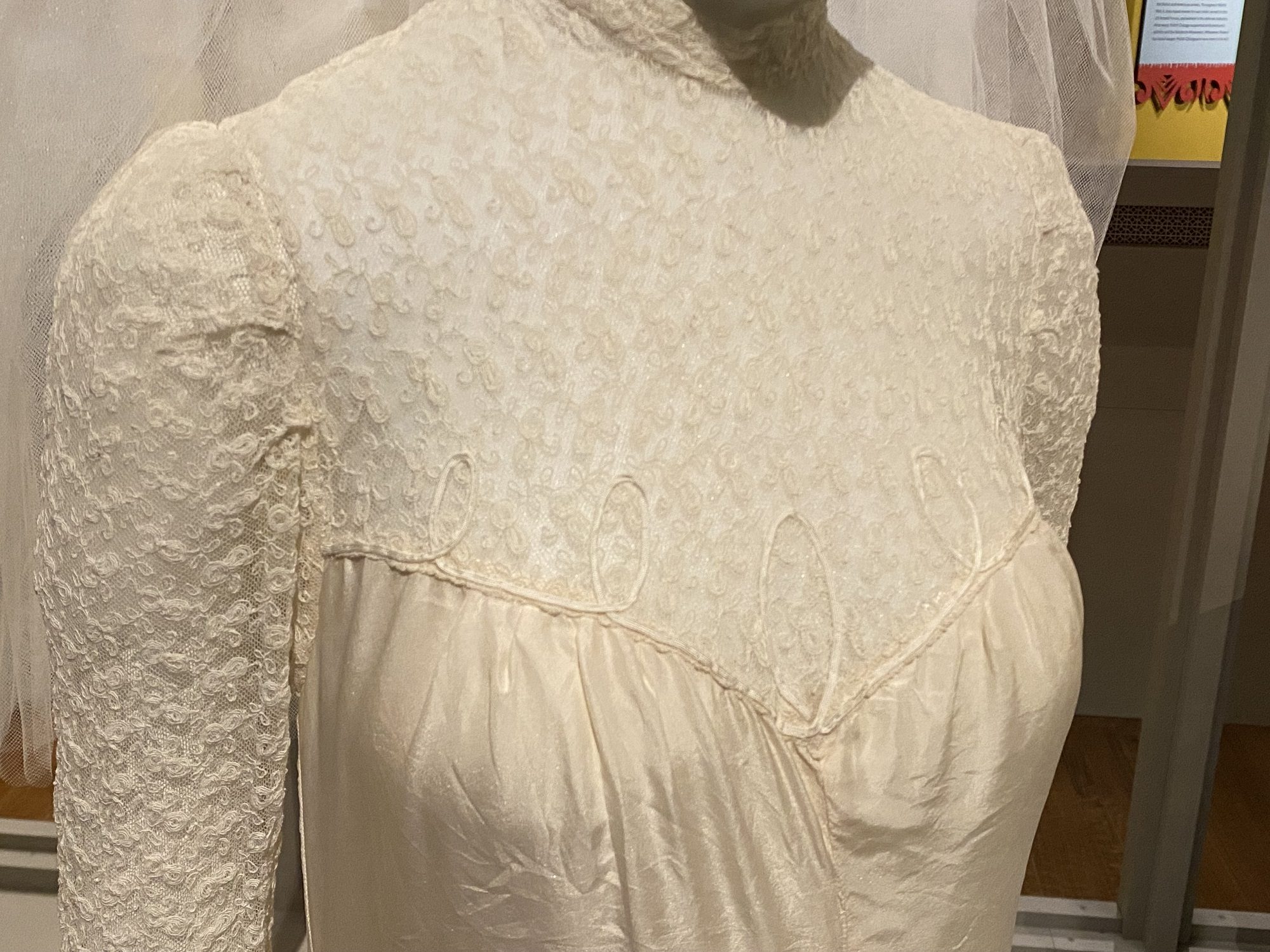
Close-up of loop detail on the bust, which is mimicked in the headpiece.
The gown is bias cut and pieced together with net lace and plastic daisy buttons down the back.
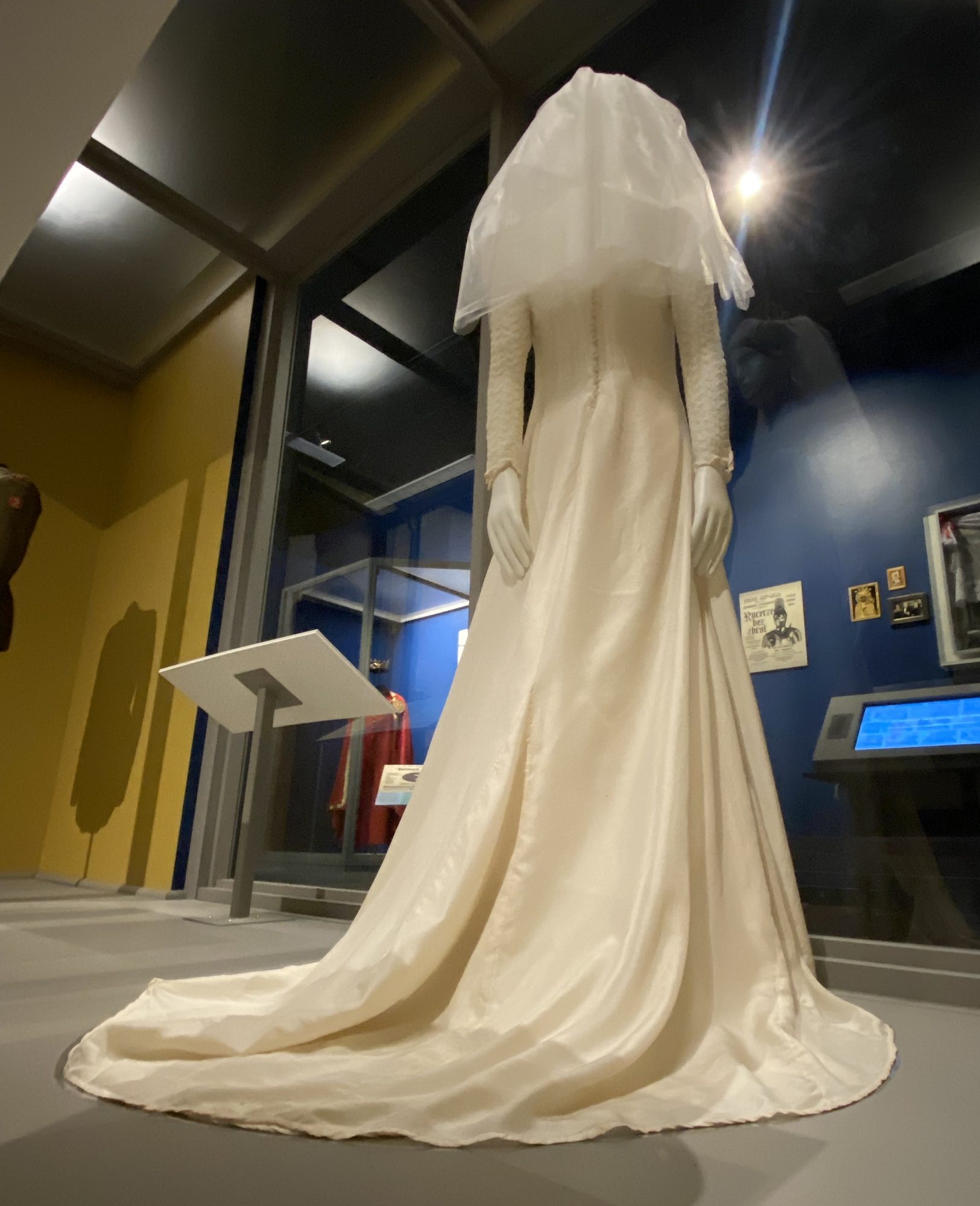
Back view of the gown, showing a short train.
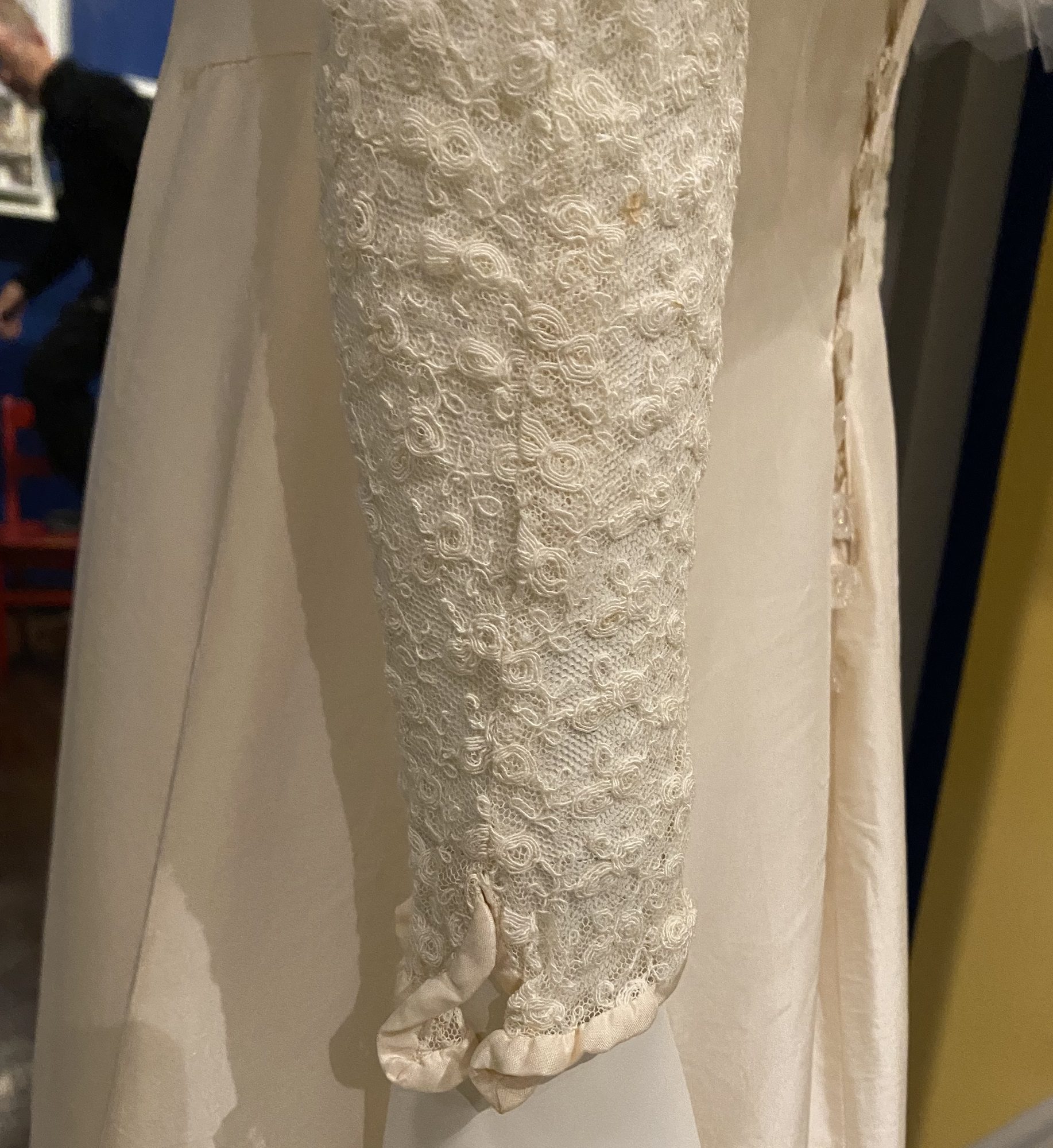
Close-up of the lace detail on a sleeve.
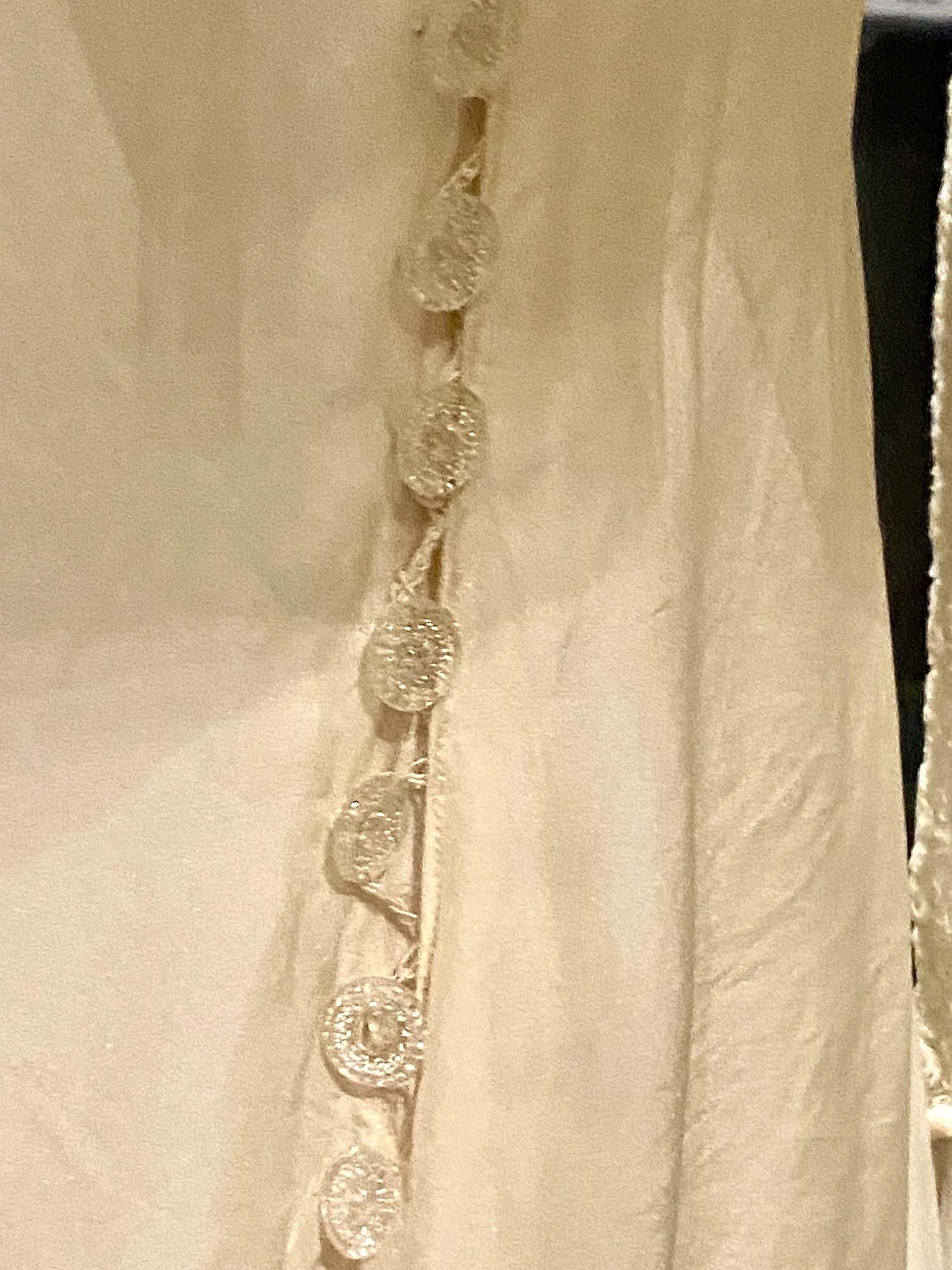
The plastic daisy buttons running down the back.
One of the first things you’ll notice about the dress is just how petite it is. To achieve the mount for this dress, Michael had to get a little creative, using a mix of mediums so the dress could be supported. Additionally, the length of the dress was shorter than the prefabricated mannequin so a modified base from the high hip down was needed to accommodate it.
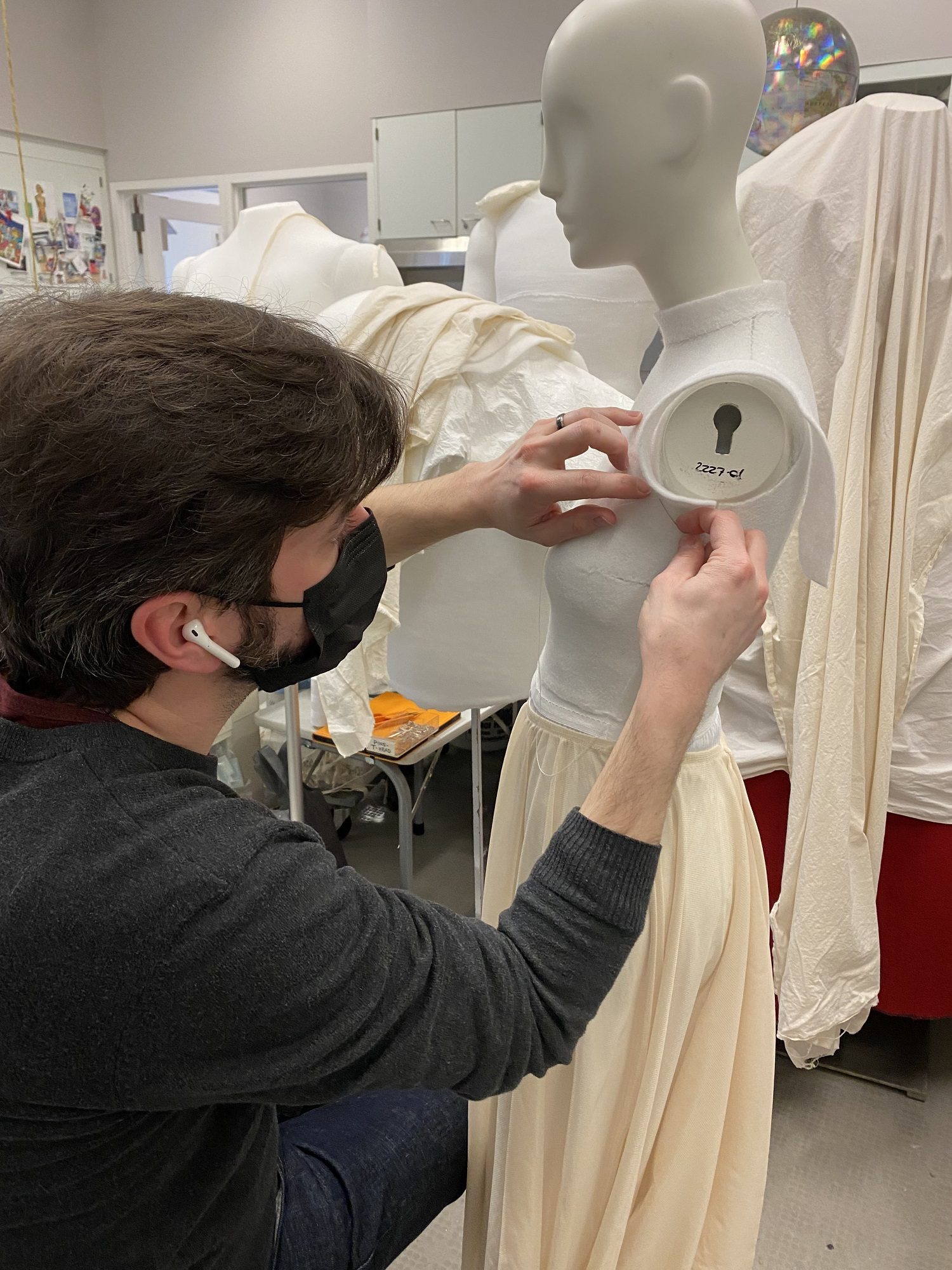
Michael Hall working on the dress mount.
Starting with taking the measurements of the dress, he padded out a petite sized mannequin with polyester fiberfill to a size just smaller than the actual dress size. Then an outer layer of Fosshape, a sewable felt-like heat-activated thermoplastic textile, was added to cover the padding to create a hardened shell or “new skin” upon which the dress could sit.
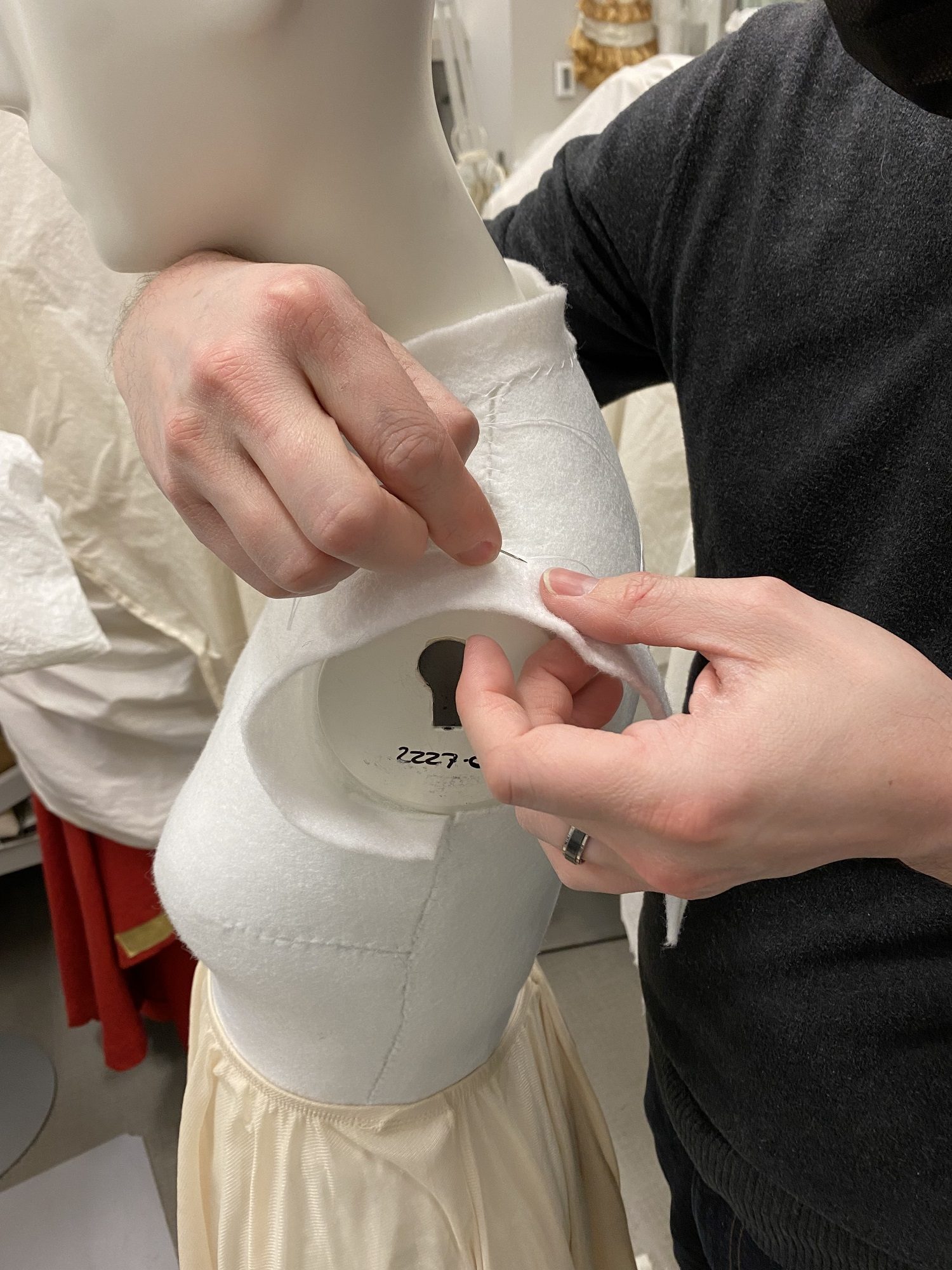
Hall adds a layer of Fosshape to the left shoulder.
Building the hips out was an additional challenge due to the modified base that did not have the full length of the hips to support the dress. The solution was padding the hips out using the original leg base, adding Fosshape on top and hardening, then removing the legs and replacing them with the modified base. Michael was careful to line the Fosshape seams up to the dress seams to minimize the visibility of the mount, which was especially tricky around the net lace neckline. Once the Fosshape layer was complete, a couple of nylon petticoats were fitted just before the final dressing to give some volume to the skirt.
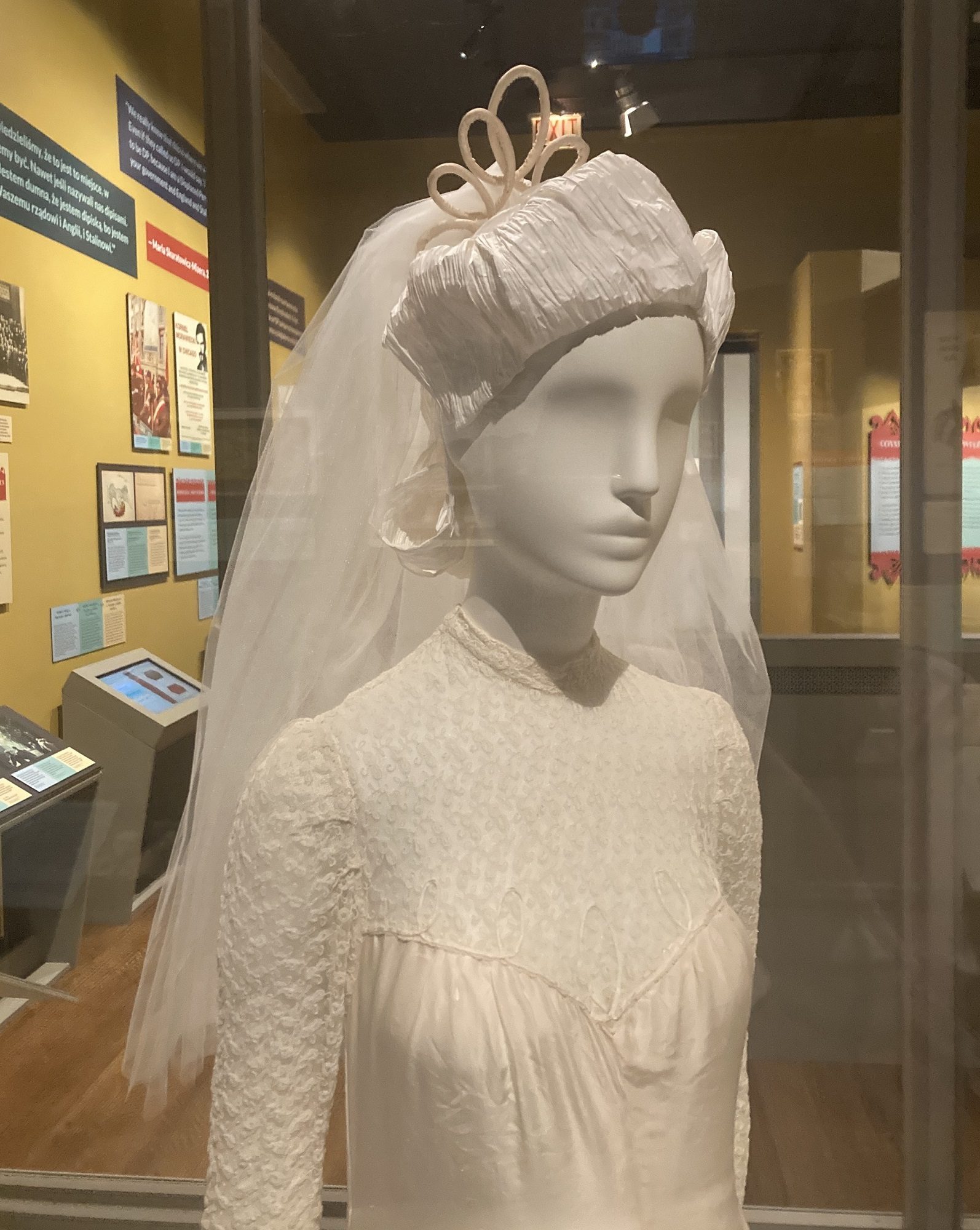
Portrait-style photograph showing the bust details and the headpiece, which sits atop a paper wig.
Jane had created her own headpiece and veil, which was reproduced for the exhibition. The headpiece on the mannequin consists of silk wrapped on wired cording with some new netting to simulate a veil with loose hand tacking wrapped around a couple areas but not through the piece. It was then secured to the styled paper wig using bug pins, which are very fine and sharp pins that minimize any damage to the piece.
You can see the wedding dress and learn more about the Wywra family’s story in Back Home: Polish Chicago.
See what other's are saying!